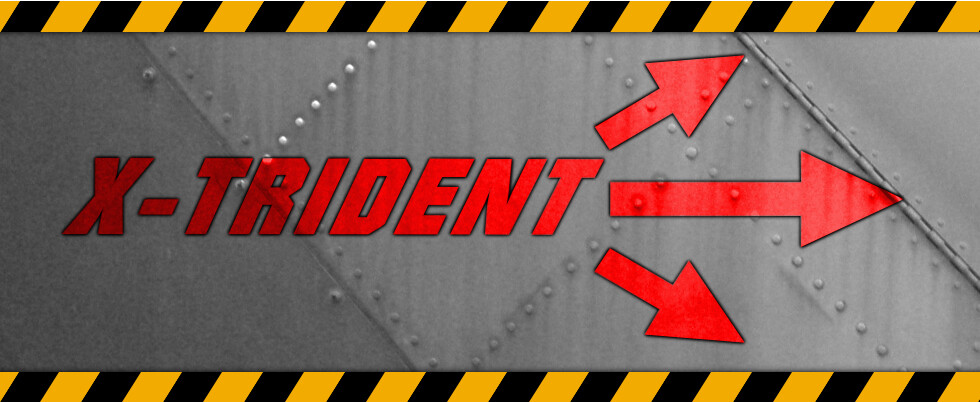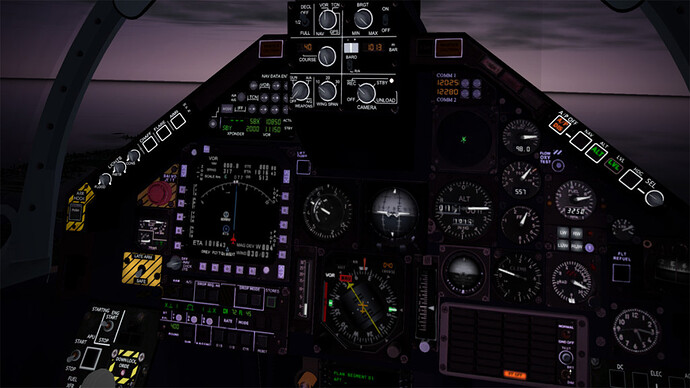X-Trident AMX International for X-Plane
By @BeachAV8R - May 24, 2015
Originally published at: Articles - Mudspike Forums
The AMX International AMX packs a nice punch into a tight package. The guys at X-Trident did a fantastic job of bringing the AMX into X-Plane for our enjoyment.
In keeping with our site philosophy of quality over quantity, and our desire to pursue our interests over timeliness, I present to you the X-Trident AMX. Released in July of 2011 (!), the AMX is a perfect example of why many people prefer the flight dynamics in X-Plane over those in the competing product, Flight Simulator X. Though the X-Trident AMX is nearly four years out of the gate, it has some fantastic features that more than make up for some of the components that might look a bit dated.
First we’ll have a very short recap of the AMX International AMX history. An Italian/Brazilian joint venture, the AMX is a sub-sonic, ground attack aircraft that was initially built in the late 80s. Roughly two-hundred units were constructed and they are currently in service with the Italian and Brazilian Air Forces. The X-Trident AMX features several different configurations with Mk series bombs, JDAMs, gun pods, and wing fuel tanks. Liveries include Italian and Brazilian squadrons, a clean template, and a couple special commemorative paint schemes. All of the included liveries look great in X-Plane 10.
The cockpit of the AMX features both a high resolution 2D cockpit as well as a lower resolution 3D virtual cockpit. Considering this is a near four year old X-Trident product, I found the VC was quite good, but 3D cockpit modeling has definitely made great strides over the past several years. Many of the switches and systems in the VC are functional, but they aren’t of super sharp resolution or high-poly models. Once you fly the airplane for a bit though, all of that sort of fades to the background as you realize what a great job X-Trident did on the systems they modeled – and more importantly, the flight model. Both the 2D and 3D HUDs are well replicated. The 3D HUD and cockpit works really well with TrackIR. The functional rear-view mirrors on the canopy bow are also a nice touch.
With regards to systems, the AMX is fairly full featured. A start from cold and dark takes several minutes and includes many steps from APU start through engine start and systems initialization. A TACAN receiver is modeled, RWR, JDAM bombing, CCIP bombing, autopilot, artificial stability systems, and accurate engine modeling. Multiple plug-ins control various aspect of the simulation which greatly enhance the user experience. Those without TrackIR will enjoy the natural head movement “Smart View” action (which can be disabled). Weapons can be set up on the armament panel for different modes of release (pairs, singles, quantity, ripple) and custom bomb crater graphics and smoke result from bomb impacts.
The CCIP bombing works great with the AMX and the flight modeling by X-Trident provides a great feeling of energy management requirement because it definitely is not overpowered.
Sure – the X-Plane world doesn’t feature destructible objects, but you can judge your own hits by the bomb craters and smoke. And you actually can shoot down other aircraft with the Sidewinder missiles. I’m not sure how exactly the real AMX performs air-to-air intercepts, but the X-Trident AMX has a forward looking sensor that will automatically lock on your Sidewinder to allow for engagements.
Pre-programmed JDAM deliveries can be executed by (prior to the mission) entering the lat/lon coordinates for the target into a text file and uploading prior to mission start. A particularly nice feature of the AMX is the air-to-air refueling modeling, which is enhanced by an X-Trident plug-in that features a custom aircraft and custom hose and drogue interactions. The custom tanker basket system has a lighted index system that shows whether you are in the correct position to receive fuel once your probe is in the basket. When using the X-Trident tanker plug-in, fuel flow rates and hookup parameters are accurate and visually accurate (the probe actually makes contact and engages the basket), while using other AI tankers results in a relatively quick fuel transfer and only approximate positioning is required.
While X-Trident can no doubt be proud of their systems and weapons integration, I find myself particularly impressed with the flight model. Yes, this is in no small part due to the exceptional fidelity that the X-Plane platform allows, but you still have to create a believable model and X-Trident has done that. Ground handling is a bit twitchy, but you quickly adapt to it. Once rolling down the runway, the impression of inertia and weight is translated well. At heavy loads (bombs and external fuel tanks), the AMX requires quite a bit of runway and speed to become airborne. If you forget to input the requisite 5° of nose up pitch trim, you’ll find yourself hauling back frantically on the stick with only a lethargic nose pitch for all the gyrations. At lighter weights, the AMX is fairly nimble and accelerates away at a brisk pace. At max gross, there is a delicate transition from the end of the takeoff roll to gear up, flaps up, and accelerating away from the airport. The AMX feel burdened as it climbs to altitude with stores, but once there, and the nose is pushed over, the aircraft does push through and get “on the step” into the high sub-sonic range. Maneuvers will bleed speed quickly at high gross weights, and it is fun to manage the energy and feel the plane plow through the air.
Landings are a tricky affair – I’d say as much so as learning to land some of the more advanced DCS flight models. Whereas most FSX flight models feel fairly sterile in the transition from flight to rolling out, X-Plane, and the AMX, provide a great stick and rudder challenge throughout the approach, flare, touchdown, and rollout. It’s not enough to just get the mains on the deck and hit the brakes – one must fly the nose down to the pavement and dance a bit on the rudders. Careful brake applications are required to ensure you don’t exceed the tire temperatures and blow the fusible plugs – which can result in a disastrous finish to your landing.
In summary – even though model is slightly dated, the AMX is a pleasure to fly, and the systems modeling is very good. To date, I haven’t had the opportunity to fly it in multi-player, but I’m excited to try it. The AMX is currently available at the X-Plane.org store for $24.95, which is a fair price for this fun module. Having further improved and refined their graphics and modeling techniques with the awesome Bell 412 (Review HERE!), we are excited to see what might be next from X-Trident.
Chris “BeachAV8R” Frishmuth













































